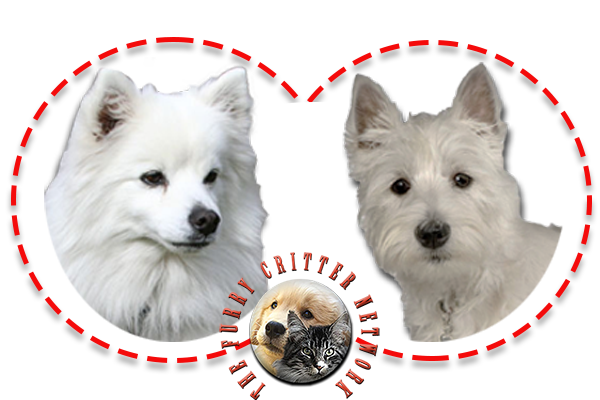Behavior
The temperament of the West Highland White Terrier can vary greatly, with some being friendly towards children, while others prefer solitude. It will not typically tolerate rough handling, such as a child pulling on its ears or fur, and can frequently be both food and toy possessive. This makes regular training from a young age of particular importance. It is normally independent, assured, and self-confident, and can make a good watchdog. It is a loyal breed that bonds with its owner but is often on the move, requiring daily exercise (15–30 min though ideally, at least an hour). The Westie is highly social and is the most friendly and jolly of all the Scottish breeds of terriers.
It is a hardy breed, and can be stubborn, leading to issues with training. A Westie may need to have its training refreshed on occasion during its lifetime. Having a typical terrier prey drive, it tends to be highly interested in toys, especially chasing balls. It does retain the instincts of an earth-dog, including inquisitive and investigative traits, as well as natural instincts to bark and dig holes. It is ranked in the average range as 88th in Stanley Coren's The Intelligence of Dogs.
This little dog adjusts well to life as a house dog provided he gets long walks. Daily brushing is required. Maintaining the white coat requires special care. Professional grooming is unnecessary unless the dog spends a lot of time outdoors.
Health
The breed is predisposed to conditions found in many breeds, such as abdominal hernias. Westie puppies may be affected by Craniomandibular osteopathy, a disease also known "lion jaw", and is sometimes also referred to as "westie jaw". The disease is an autosomal recessive condition and so a puppy can only be affected by it if both its parents are carriers of the faulty gene. The condition appears across many breeds, including several different types of terrier, as well as other unrelated breeds such as the Great Dane. It typically appears in dogs under a year old, and can cause problems for the dog to chew or swallow food. Radiographic testing can be conducted to diagnose the condition, in which the bones around the jaw thicken; additionally the blood may show increased calcium levels and enzyme levels.
Westies are prone to skin disorders. About a quarter of the breed surveyed are affected by atopic dermatitis, a heritable chronic allergic skin condition. A higher proportion of males are affected compared to females. There is an uncommon but severe breed-specific skin condition that may affect West Highland White Terriers affecting both juveniles and adult dogs. This condition is called Hyperplastic Dermatosis. Affected dogs can suffer from red hyperpigmentation, lichenification and hair loss. In the initial stages, this condition can be misdiagnosed as allergies or less serious forms of dermatitis.
An inherited genetic problem that exists in the breed is globoid cell leukodystrophy. It is not breed specific, and can appear in Cairn Terriers and other breeds including American Eskimo Dogs and Pomeranians. It is a neurological disease where the dog lacks an enzyme called galactosylceramidase. The symptoms are noticeable as the puppy develops, and can be identified by the age of 30 weeks. Affected dogs will have tremors, muscle weakness, and trouble walking. Symptoms will slowly increase until limb paralysis begins to occur. Due to it being a hereditary condition, it is recommended for owners to avoid breeding affected animals in order to eliminate it from the breed. Another genetic condition that affects the breed is "White dog shaker syndrome". As this condition is most commonly found in Westies and in Maltese, the condition was originally thought to be connected to the genes for white coats, however the same condition has since been found in other non-white breeds including the Yorkshire Terrier and the American Eskimo Dog. The condition typically develops over one to three days resulting in tremors of the head and limbs, ataxia and hypermetria. Affected males and females can be affected for different lengths of time, with symptoms in females lasting for between four to six weeks, while males can be affected the rest of its life.
Other less common conditions which appear in the breed include hydroxyglutaric aciduria, which is where there are elevated levels of alpha-Hydroxyglutaric acid in the dog's urine, blood plasma, and spinal fluid. It can cause seizures, muscle stiffness, and ataxia, but is more commonly found in Staffordshire Bull Terriers. A degeneration of the hip-joint, known as Legg–Calve–Perthes syndrome also occurs to the breed. However the chances of this condition occurring are much higher in some other breeds, such as the Australian Shepherd or the Miniature Pincher.






